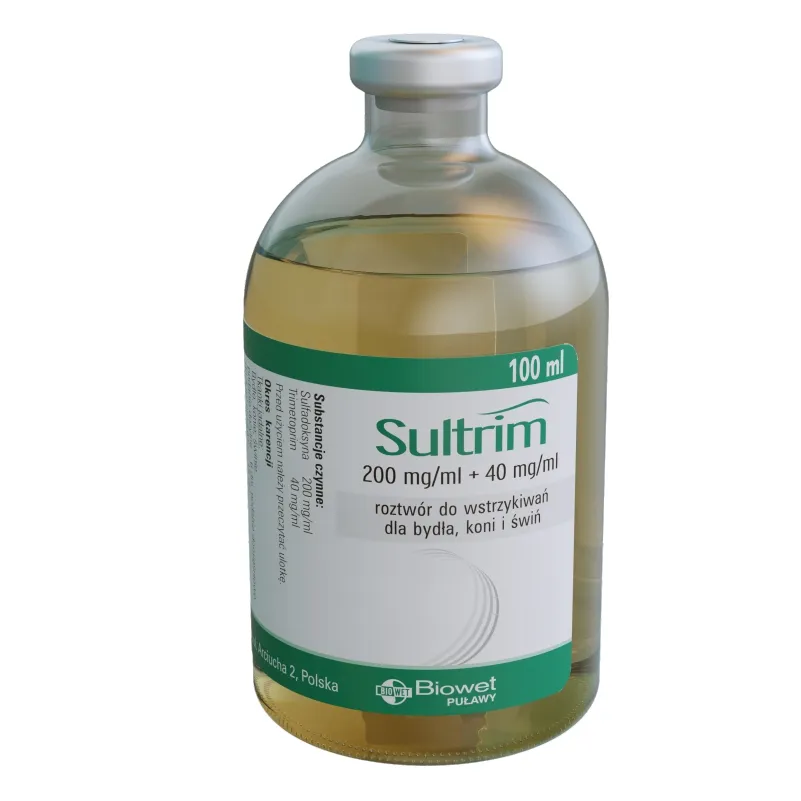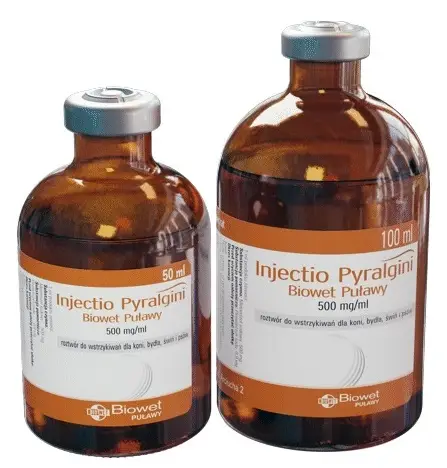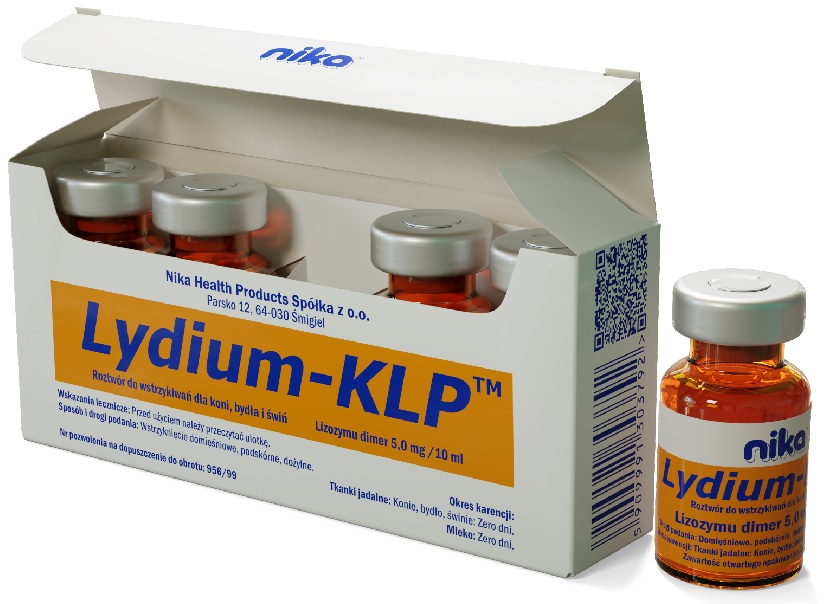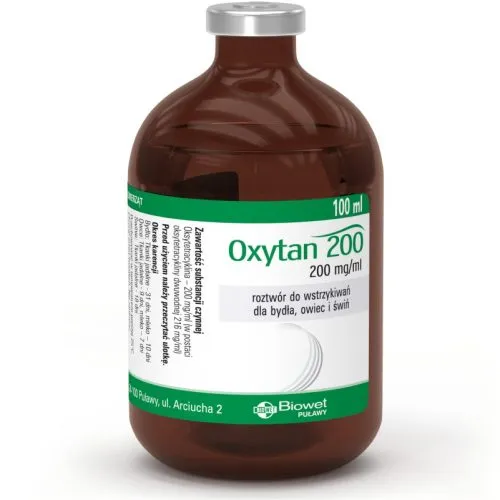Description
Sultrim, 200 mg/ml + 40 mg/ml, solution for injection for cattle, horses and pigs
Statement of the active substance(s) and other ingredient(s)
Active substances:
Sulfadoxine 200 mg/ml
Trimethoprim 40 mg/ml
Clear, yellow brown solution.
Target species
Cattle, horses, pigs.
Indications for use
Cattle:
Bacterial pneumonia in calves caused by Pasteurella multocida, Mannheimia haemolitica, Corynebacterium pyogenes, Staphylococcus spp., Streptococcus spp.
Bacterial gastroenteritis in calves caused by Salmonella spp., Proteus spp.
Colibacillosis in calves caused by Escherichia coli.
Metritis in cows caused by Staphylococcus spp., Streptococcus spp., Escherichia coli, Haemophilus somnus, Corynebacterium pyogenes, Pseudomonas spp.
Listeriosis caused by Listeria monocytogenes.
Pododermatitis caused by Fusobacterium necrophorum, Bacteroides melaninogenicus and Actinomyces pyogenes.
Horses:
Respiratory infections caused by Staphylococcus spp.,Streptococcus spp., Actinobacillus equi, Rhodococcus equi, Pasteurella spp.
Gastrointestinal infections caused by Rhodococcus equi, Actinobacillus equi, Salmonella spp.
Pigs:
Bacterial respiratory tract infections caused by Streptococcus suis,Actinobacillus pleuropneumoniae, Actinobacillus suis, Bordatella bronchiseptica, Haemophilus parasuis, Pasteurella multocida.
Bacterial joint inflammation caused by Arcanobacterium pyogenes, Escherichia coli, Staphylococcus spp., Streptococcus spp.
Colibacillosis in piglets caused by Escherichia coli.
Bacterial gastroenteritis in piglets caused by Salmonella choleraesuis.
Metritis in sows, MMA syndrome caused by Staphylococcus spp., Streptococcus spp., Escherichia coli, Klebsiella spp.
Atrophic rhinitis caused by Bordatella bronchiseptica, Mannheimia haemolytica and Pasteurella multocida.
Contraindications
Do not use in cases of hypersensitivity to the active substance(s) or to any of the excipients.
Do not use in animals with hepatic and/or renal failure.
Do not use in pregnant animals.
Do not use in animals with blood dyscrasia.
Do not use in dehydrated animals.
Special warnings
Special warnings:
In horses treated with detomidine, administration of the drug may cause severe arrhythmia.
Special precautions for safe use in the target species:
Large doses of the product should be administered intravenously.
In case of intravenous administration, inject the product slowly.
The maximum dose injected intramuscularly or subcutaneously should not exceed 20 ml per one site.
The product should be used based on susceptibility test results and local regulations governing the use of sulphonamides.
Underdosing or too short duration of treatment may promote the development of drug resistance.
Sulphonamides combined with trimethoprim, especially after prolonged treatment, might cause folate deficiency and deficiency in vitamins produced by gut microbiota.
Special precautions to be taken by the person administering the veterinary medicinal product to animals:
The product should be administered slowly to avoid accidental self-injection. Wash hands after usage
In case of contact with eyes or skin, immediately flush the affected site with plenty of water.
In case of accidental self-injection, seek medical advice immediately and show the package leaflet or the label to the physician.
People with known hypersensitivity to sulfadoxine or trimethoprim should avoid contact with the veterinary medicinal product, or administer the product with caution. The product should not be administered by pregnant women.
Special precautions for the protection of the environment:
Not applicable.
Pregnancy and lactation:
Do not use during pregnancy.
The product can be used during the lactation period.
Interaction with other medicinal products and other forms of interaction:
The product should not be administered simultaneously with detomidine.
Sulphonamides may compete for blood protein-binding sites with other drugs, such as methotrexate, phenylbutazone, thiazide diuretics, salicylates, probenecid, and phenytoin. Urinary acidifying agents, such as ascorbic acid and ammonium chloride, are likely to increase the risk of precipitation of sulphonamides in the urinary system.
Trimethoprim might increase the efficacy of antithrombotic agents, such as warfarin, by inhibiting its metabolism.
Overdose:
Overdosing the product in newborn animals and individuals with impaired liver and/or kidney functions may result in the accumulation of the drug and its metabolites.
Major incompatibilities:
None known.
Adverse events
| Frequency unknown (cannot be determined based on the available data):
| Swelling at the injection site 1 Hypersensitivity reactions2 Impaired renal function3 |
1 Painful, spontaneously resolving oedema at the injection site may appear after intramuscular or subcutaneous injection.
2 Elicited especially after rapid intravenous injection.
3 Caused by precipitation of sulphonamide in renal tubules, especially in dehydrated animals, animals with aciduria, or after administration of high doses.
Reporting adverse events is important. It allows continuous safety monitoring of a veterinary medicinal product. If you notice any side effects, even those not already listed in this package leaflet, or you think that the medicine has not worked, please contact, in the first instance, your veterinarian. You can also report any adverse events to the marketing authorization holder using the contact details found at the end of this leaflet, or via your national reporting system: Department for Documentation Assessment and Pharmacovigilance of Veterinary Medicinal Products, Office for Registration of Medicinal Products, Medical Devices and Biocidal Products, Al. Jerozolimskie 181C, PL-02-222 Warszawa, Tel.: +48 22 49-21-687, Fax: +48 22 49-21-605, https://smz.ezdrowie.gov.pl
Dosage for each target species, routes and method of administration
Horses, cattle, pigs: 13.33 mg of the product/kg body weight, which corresponds to 1 ml of the product/15 kg body weight injected intravenously, intramuscularly or subcutaneously, once daily for 4 to 6 days.
Advice on correct administration
In case of intravenous injection, administer the product very slowly, at the same controlling the animal’s respiration and heart rate, as well as the colour of the conjunctiva.
Withdrawal periods
Meat and offal:
Cattle, horses, pigs:
– intravenous administration – 6 days
– intramuscular administration of up to 4 ml of the product – 15 days
– intramuscular or subcutaneous administration of more than 4 ml of the product – 30 days
Milk:
Cattle: 4 days
Special storage precautions
Keep out of the sight and reach of children.
Store below 25°C. Protect from light. Do not freeze. Store in the original, closed package
Do not use this veterinary medicinal product after the expiry date which is stated on the label after EXP. The expiry date refers to the last day of that month.
Shelf life after first opening the immediate package: 28 days
Special precautions for disposal
Medicines should not be disposed of via wastewater or household waste.
Use take-back schemes for the disposal of any unused veterinary medicinal product or waste materials derived thereof in accordance with local requirements and with any applicable national collection systems. These measures should help to protect the environment.
Classification of veterinary medicinal products
Veterinary medicinal product subject to prescription.
Marketing authorisation numbers and pack sizes
MA number: 2729/17
Pack size: 100 ml
Date on which the package leaflet was last revised
22/09/2023
Detailed information on this veterinary medicinal product is available in the Union Product Database (https://medicines.health.europa.eu/veterinary).
Contact details
Marketing authorisation holder and manufacturer responsible for batch release:
Biowet Puławy Sp. z o.o.
Henryka Arciucha 2
24-100 Puławy
Poland
Tel./Fax: + 48 (81) 886 33 53, Tel.: + 48 (81) 888 91 00
e-mail: sekretariat@biowet.pl
Contact details to report suspected adverse events:
Biowet Puławy Sp. z o.o.
Henryka Arciucha 2
24-100 Puławy
Poland
Tel: + 48 (81) 888 91 33, + 48 509 750 444
e-mail: biowet@biowet.pl
SPC 2023-09-22
2025-03-25






